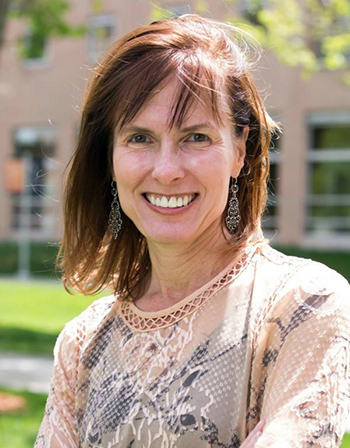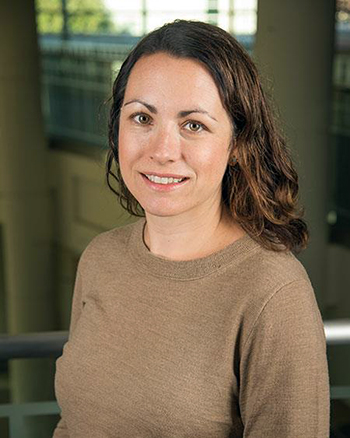Cancer Deaths Expected to Increase
CU Cancer Center leaders warn of delayed cancer screening and reduction in treatments
By Greg Glasgow and Jessica Cordova
(April 2021) Regular mammograms, colonoscopies, or pap smears are critical to detect early-stage cancers, but missed screenings and delayed appointments are a grave consequence of the COVID-19 pandemic.
According to an estimate by the director of the National Cancer Institute, at least 10,000 excess deaths from breast cancer and colorectal cancer over the next 10 years in the United States will be attributable to missed cancer screenings caused by COVID-19.
That represents a 1% increase in cancer-related deaths, and it is a conservative estimate because it doesn’t include the effects of treatment delays and interruptions caused by the pandemic. It also doesn’t count a decrease in preventive procedures, such as the HPV vaccine.
Another measure based on electronic health records found a nationwide drop of between 86% and 94% in preventive cancer screenings for cervical, colon, and breast cancer in the weeks after COVID-19 began sweeping the country in 2020, when compared to the same weeks in 2017-2019. The University of Colorado Cancer Center has seen a similar decrease in the number of screenings.
The decline is alarming, said leaders of the CU Cancer Center.

Cathy Bradley, PhD
“Routine screening for cancer is extremely important. We would prefer to prevent it than to treat it,” says Cathy Bradley, PhD, deputy director of the CU Cancer Center and Colorado School of Public Health’s associate dean for research. “In the case of colorectal cancer, with screening we can remove premalignant tumors so that it never progresses. With an HPV vaccine, we prevent the cancer from occurring altogether.”

Jennifer Diamond, MD
Treatment changes
In addition to putting off testing, some patients also are forgoing treatment or altering their treatment schedule to avoid possible exposure to COVID in hospitals and clinics.
“In patients with metastatic disease, we’ll typically do scans every two to four months to make sure that things are stable, but for some patients now, we’ve said, ‘If you’re doing well, if the bloodwork looks good, you feel good, let’s spread that out to five or six months,’” Jennifer Diamond, MD, CU Cancer Center member and associate professor in the Division of Medical Oncology, says. “We’ve really tried to individualize the treatment for patients to try to minimize COVID exposure but at the same time keep them on their treatment.”
Diamond is part of a new research study in which cancer-fighting drugs typically administered by infusions in a clinic are instead given as an injection in a patient’s home.
“They’ll set up a visiting nurse that will actually go out and administer the injection to the patient at home and draw any labs that are needed, and then the patient can just do a telehealth visit,” she says. “I think that’s something that is really innovative — a way that we are adapting our practice to make it safe for patients as far as minimizing COVID risk
but also keeping them on their curative therapies.”
At the beginning of the pandemic, many cities and states considered cancer treatment an elective procedure. Colorado allowed cancer treatments as necessary procedures.
“We were very fortunate in Colorado that our cancer center was able to continue infusions in March and April,” Bradley says. “Very few cancer centers across the country were able to keep up infusions. Only over the summer were they starting to ramp up again.”
At the CU Cancer Center, infusions stayed at about 98% of pre-COVID levels, while cancer-related surgeries dropped in the second quarter of the year to about 60% of pre-COVID levels. Now, surgeries have increased to make up for the patients who did not come in or delayed their care.
“You would not want to be the person in the middle of your treatment or starting treatment and having to have it delayed by several weeks or months,” Bradley says.
At other facilities around the country, not only was treatment delayed, but many changed their standards of care as well.
“One of the interesting things going on around the country is that some of the doses of chemotherapy and other infusion therapies have been reduced to decrease the chances of side effects, so that a patient would not be as susceptible to an infection or getting sick,” Bradley says. “We do not know what that does to treatment effectiveness. Now there are some discussions around if we needed to give that much chemotherapy or treatment to begin with, or if instead, treatment is being given at inefficacious doses. We don’t know.”
Safe to get screening or treatment
Though patients understandably have concerns about exposure to COVID-19 when they go to a hospital or clinic, experts say medical facilities very safe due to the strict procedures they follow.
“The in-hospital infection rate is extremely low. At this point, clinics have become savvier at reducing the risk of infections,” Bradley says. “If patients are doing their part with wearing masks, washing their hands and social distancing, the actual clinic environment is relatively safe.”
The COVID-19 pandemic has led to new research that will have impacts on other diseases, including cancer, and innovations like telehealth will last even after the pandemic has passed.
“In times of crisis, we do tend to see incredible medical advancements,” Bradley says. “A lot of cancer treatments have been repurposed to see their effectiveness with the treatment of COVID. This may lead to us getting better in some areas of cancer treatment and have a chance for new discoveries. Discoveries in treating and preventing COVID may apply to cancer.
Advancements in telehealth will unquestionably benefit cancer patients. Challenges often accelerate and bring about our most creative thinking and willingness to work together.”
Diamond says the advances in telehealth brought on by the pandemic are a good thing for some out-of-state patients who will no longer have to drive to Denver for a checkup or second opinion. It also will result in better outcomes for rural patients who don’t have easy access to cancer specialists.
“If we can expand access to expert opinions in rural communities, I think that will improve cancer care moving forward,” she says. “People who live in Wyoming or even rural Colorado, where they may have an oncologist but not really a subspecialized oncologist, it’s great that they’ll be able to get a second opinion from an expert at the University through telehealth.”
The fight against cancer continues
Even as vaccinations offer hope for a decline in deaths due to COVID-19, the fight against cancer continues.
“Cancer is still the number one cause of death in Colorado,” says Bradley. “COVID might be a bigger concern for those over the age of 80 or with compromising health conditions, given the immediate risks that it presents. But for younger age groups, cancer is still an important concern and can be deadlier than COVID.”
According to the American Cancer Society, an estimated 606,520 people in the United States died due to cancer in 2020. As of March, more than 500,000 people have died of COVID-19 in the United States. In Colorado, an estimated 8,220 people died from cancer in 2020 and as of March, 5,954 have died from COVID-19.
“Both are terrible, devastating diseases that cause a lot of death. They impact the ability to make a living, and they cause a lot of pain and suffering,” says Richard Schulick, MD, MBA, director of the CU Cancer Center and chair of the CU Department of Surgery.
“I am glad that there is now a vaccine for COVID and COVID will eventually be taken off the table. But I think we have a lot more work to do with cancer. I am hopeful that one day in the not-too-distant future, we will actually be able to conquer a lot of the cancers that Americans and Coloradans suffer from.”